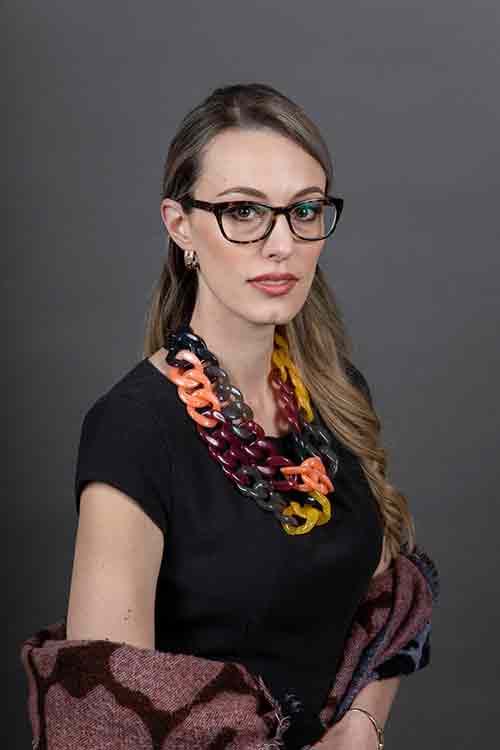
NEH awards grant to Tracy Cosgriff and team for digital reconstruction of Pope Julius II’s library

Tracy Cosgriff, assistant professor of art and art history at The College of Wooster, and her team of collaborators from the University of California received a National Endowment for the Humanities (NEH) Digital Humanities Advancement grant for their project, “Remastering the Renaissance: A Virtual Experience of Pope Julius II’s Library in Raphael’s Stanza della Segnatura,” that digitally reconstructs the library of Pope Julius II. During the pope’s rule from 1503 to 1513, the library was housed in the Stanza della Segnatura, a room in the Apostolic Palace which is most famous for being the site of School of Athens, the fresco painting by Italian Renaissance painter Raphael.
The team of scholars and visual specialists will use the NEH grant, which runs from January 2021 to December 2022, to create a virtual reality reconstruction of the library using the platform Scalar to annotate and tag the library’s items and the game engine Unity to develop the 3D visualization. “Grants from the National Endowment for the Humanities are among the most competitive and prestigious in this country,” Cosgriff said. “The grant period is dedicated to the development of integrated platforms using Scalar and Unity that will allow dispersed audiences to have playful virtual experiences of historic spaces, often difficult for many to access.”
This project will allow a wide variety of people to access this culturally significant space remotely. “The outcome is an immersive digital portal accessible to students, scholars, educators, and curious visitors,” Cosgriff said. “It allows us to develop and test new forms of online display of cultural heritage in situations where access is limited, be it through geographic distance, ability limitations, or pandemic-related restrictions. This scenario allows us also to explore the possibility of integrating the visit of the Stanza into online and remote curricula for instruction of art history and other fields.”
Since the room that the team will virtually reconstruct is far better known for Raphael’s fresco, this project brings to light its additional important and underrecognized history as the pope’s library. “Digital platforms and 3D software afford us the critical opportunity to reunite the space and its volumes, allowing us to understand the Stanza as a lived intellectual space for the first time in nearly five-hundred years,” Cosgriff explained. “It is impossible to sufficiently articulate these complex spatial and theoretical networks using traditional means. By utilizing digital technologies to repopulate the Stanza with its original objects, the project fills this gap.”
Cosgriff has spent her career studying the Italian Renaissance with a specific focus on Raphael and the classical tradition. “The project in many ways began with my doctoral dissertation, which focused on the relationship between Raphael’s pictorial rhetoric and contemporary cultures of books and reading,” she said. Cosgriff has also made important discoveries related to Pope Julius II’s library. “As a Fulbright Scholar in Italy, I recovered a significant number of the pope’s deluxe manuscripts and printed books from the Vatican Library and Secret Archives, which were long presumed lost,” she said.
In her classes at Wooster, Cosgriff encourages her students to consider the historical context of cultural objects, a mission central to this project. “I see the NEH project not only as an extension of my research interests, but also an opportunity to transform the ways in which we teach the Renaissance canon,” she said. “Visitors will be given key contexts, learned through exploratory modes and interactive gameplay that illuminate key intellectual and historical dimensions of the art’s meaning and design.”
Posted in News on January 5, 2021.
Related Posts
Related Areas of Study
Art - Art History
Explore the cultural and historic significance of art and artists while building research and analytical skills.
Major Minor

